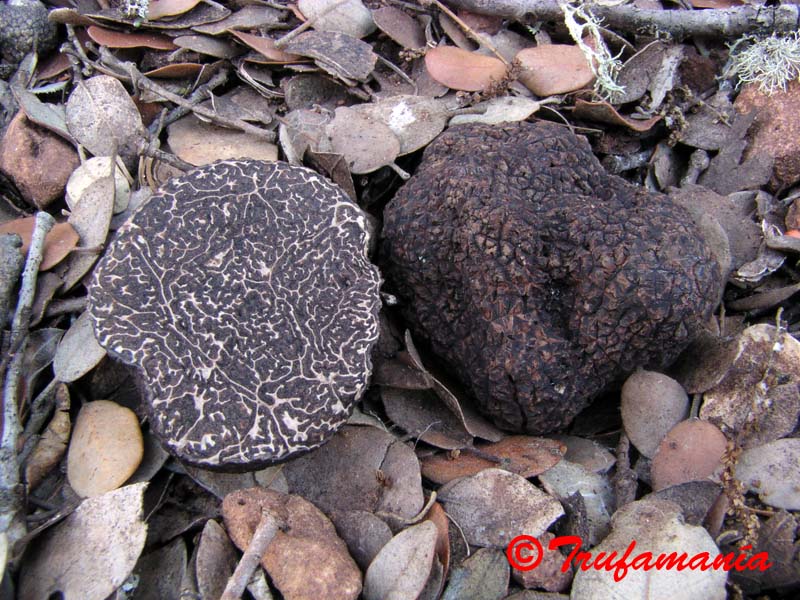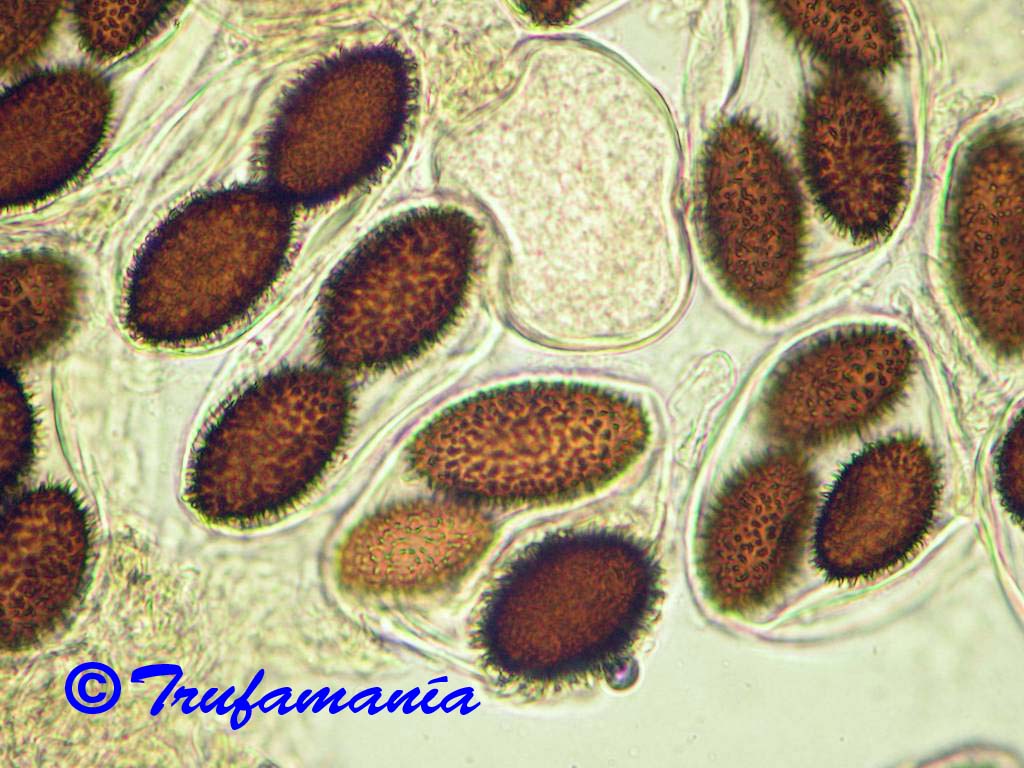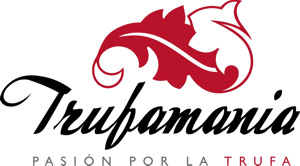TUBER MELANOSPORUM Vittadini
Monographia Tuberacearum 36, Tab. II fig III, Tab. III fig. XX (1831)

(Click on the picture to see more images)
Synonyms:
Tuber brumale, pulpa obscura, odora P. Micheli (1729), Nova Plantarum Genera 221, t. 102
Tuber gulosorum (Scopoli) Pico (1788), Melethemata Inauguralia. De fungorum generatione et propagatione 79
Tuber nigrum Bulliard (1788), Herbiér de la France t. 356
Tuber cibarium nigrum Bulliard (1791), Histoire des Champignons de la France 74
Tuber cibarium Persoon (1801), Synopsis Methodica Fungorum 126
Tuber cibarium Bulliard: Fries (1823), Systema Mycologicum 2, Pt. II: 290
Tuber gulonum (Corda) Paoletti (1889), in Saccardo Sylloge Fungorum 8, 894, without illustration
Macroscopic characters:
Ascomata: hypogeous, subglobose or irregular in form depending on soils conditions, globose in loose soils, irregular in stony soils, 1-10 (-15) cm in size, blackish-brown, initially reddish, warted. Warts 3-5 mm across, pyramidal, 4-6-sided, depressed at the apex, vertically fissured.
Gleba: firm, solid, whitish at first, becoming purplish-black at maturity, marbled with numerous, thin, white, branching veins. These veins turn red at maturity when exposed to air and go missing in frozen truffles.
Odour: strong, distinctive, surprising and not always pleasant for everyone.
Taste: strong, distinctive, persistent, a little bitter.
Habitat:
Well drained, airated calcareous soils with high porosity. Soils must be rich in calcium and alkaline. Rains should be well distributed throughout the year and summer storms in July-August are critical for truffles fruiting bodies. Tuber melanosporum grows in sunny places, inhibits plants growing and makes “burns”. Truffles ripen in winter, from December to March and are associated with the roots of several trees: oaks (Quercus), poplars (Populus), hazels (Corylus), pines (Pinus), lindens (Tilia), hornbeams (Carpinus), willows (Salix). Quercus ilex, Corylus avellana and Quercus faginea are the most productive trees in Spain. Successfully cultivated though yields are highly variable.
Notes:
Wild truffières of Tuber melanosporum are becoming extinct and most of the truffles found in markets come from cultivated truffières. Tuber melanosporum is also cultivated in countries where it has never grown naturally. The first Tuber melanosporum harvested outside of Europe was in California in 1991. They are harvested commercially in New Zealand from artificial truffières since several years (first truffles in 1993). The first cultivated truffe in Chile was harvested in 2009

(Click on the picture to see more images)
Microscopic characters:
Asci: subglobose, sessile or short-stalked, 70-80 x 50-70 µm, 1-5-spored.
Ascospores: 28-48 x 20-30 µm excluding ornament, size variable depending on number of spores in the ascus, Q range = 1,5-1,8, ellipsoid, dark brown, opaque at maturity, ornamented with pointed, often curved spines, 2-3 (-5) µm long, usually separate but sometimes coalescing to form short crests.
Peridium: pseudoparenchymatous
| Antonio Rodríguez trufamania@gmail.com antonio@trufamania.com |



